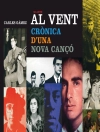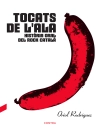Punk Rock examines the history of punk rock in its totality. Punk became a way of thinking about the role of culture and community in modern life. Punks forged real alternatives to producing popular music and built community around their music. This punk counterpublic, forged in the late Cold War period, spanned the globe and has provided a viable cultural alternative to alienated young people over the years. This book starts with the rise of modernity and places the emergence of punk as a musical subculture into that longer historical narrative. It also reveals how punk itself became a contested terrain, as participants sought to imbue the production of music with greater meaning. It highlights all styles of punk and its wide variety of creators around the world, including from the LGBTQ+, feminist, and alternative communities. Punk was and remains a transnational phenomenon that influences music production and shapes our understanding of culture’s role in community building.
Tabela de Conteúdo
List of Illustrations
Acknowledgments
Introduction: Punk Rock and History
1. The Roots: Fashion, Art, Politics, and Music in Modernity: Nineteenth Century to 1970
The Rise of Capitalist Modernity
Philosophical and Artistic Responses to Consumerist Modernity
The Creation of Teenagers and Youth Cultures
Popular Music and Youth Subcultures in the Cold War
2. From Proto-Punk to First-Wave Punk: 1970 to 1980
Art and Music Collide
Critical Origins of a Genre
Proto-Punk: Early Musical Influences on Punk
First-Wave Punk Scenes
3. Second Wave: From Subculture to Underground Globalization: 1980 to 1990
Building the Translocal Underground
Who’s the
Real Punk: Politics, Racism, and Other Ills
Punk Panic
4. New Underground Scenes and the Rise of Alternative Music: 1990 to 2000
Riot Girl and Queercore: Make Punk Inclusive Again
Alternative Nation
The End of Punk Panic?
5. Punk in the Twenty-First Century: 2000 to 2021
Cyberpunks
Postcolonial Punk?
Conclusions: Will the ‘Real’ Punk Rockers Please Stand Up?
Notes
Bibliography
Index
Sobre o autor
Mindy L. Clegg teaches history at Perimeter College at Georgia State University.












